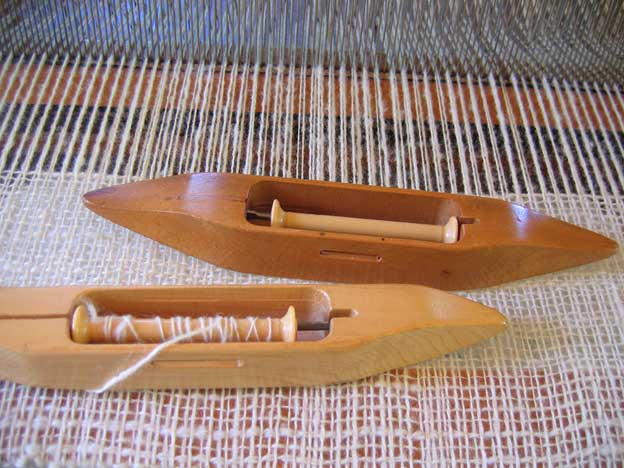Weaving is an art form that can be traced back to the Neolithic era. It is said to be one of the oldest surviving crafts. It was traditionally done by hand-using a weaving loom. Today, most weaving looms have been automated and do not have some of the same parts as a traditional loom. Many modern looms used in industry do not even operate with a shuttle.
The shuttle is a tool that was designed to hold the thread of weft yarn used in a traditional weaving loom. In its customary uses it was thrown or passed back and forth through the shed of the weaving loom. The shuttle is designed to fit between the yarn threads of the warp, weaving the weft into the fabric.


The most simplistic shuttles are known as stick shuttles. They are created from a flat, narrow piece of wood and have notched ends to hold the weft yarn. More intricate shuttles typically include a bobbin or pin to hold the weft. Traditionally, Flowering Dogwood was the most common wood used to create a shuttle. It was chosen because it is a very hard wood that is splinter resistant and can be transformed to a very smooth finish. This is very important so that the shuttle does not become stuck inside the loom threads.
At Fletcher Industries, we have been providing support to the textile industry for over 150 years. We offer a full line of shuttles, machinery and accessories for industrial weaving applications. Contact us to learn more.
Contact Info
Fletcher Industries & Fletcher International
1485 Central Dr.
Southern Pines, NC 28387
910-692-7133
quality@fletcherindustries.com
©2023 Fletcher Industries. All rights reserved. | Built by First Flight Agency